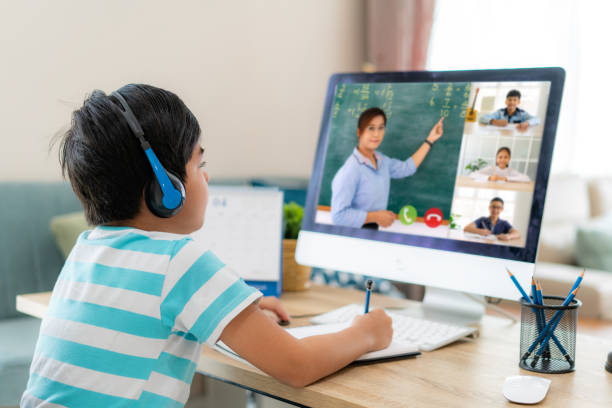Even with the global pandemic coming under control, numerous organizations and educational institutions are willing to continue with their online instruction. Online learning does have a lot of advantages, the main one being the chance to teach and study from anywhere, anytime. This type of flexibility is something that education has never experienced before. Along with the advantages, though, a number of challenges arise for both teachers and students.
The core of a successful online session lies in class monitoring and discipline management. This is an aspect on which not only students, but also teachers need to work on.
Discipline in an online and a traditional classroom
If it were just a matter of keeping the virtual classroom quiet, this would be very easy to manage. Online discipline, however, extends well beyond limiting noisy outbursts during class. Teachers have to monitor also attendance and appearance – if students are engaged, attentive, and with cameras on.
In the traditional classroom, the teacher could scan the space in a few seconds and see who is misbehaving, who is listening, how students are feeling and what problems they experience. In a virtual environment with an online whiteboard this would be much harder and time and effort consuming.
Let’s have a look at some virtual classroom management means and practices which could help the teacher create both a friendly and well-ordered environment in a virtual session.
Put distractions away
The first prerequisite for a successful online session is to make the virtual classroom feel as much as possible the way a physical classroom feels and looks like. A key point here would be to make students put away phones, toys and other distractions. Staying away from pets and siblings is advisable too.
An important part of limiting distractions is setting up a schedule. This means that students have to enter and “sit” in the classroom at a specific time, as well as trying to create a learning space is essential. This sets and prepares their body and brain for the learning process.
Encourage eye contact
Having a webcam in front of you certainly is not the same as being looked at and listened by a real person. Nevertheless, the teacher can encourage students in the online session to look at the camera, smile and behave the way they would, in case any of their classmates was sitting in front of them or next to them. Show them how to behave towards each other, talk politely and show respect. The person in the video box is still a person with voice, feelings, goals.
Dress adequately
A general rule for creating the proper environment and setup for work or study, is to dress in the way you would if you were supposed to be physically present in the office or school. A good idea for the teacher would be to set a simple rule to get up in time, freshen up and dress, instead of being present in class in their pajamas, with the laptop on their bed and all covered up.
It can sound very simple and straightforward: “Always dress in a shirt and pants/dress, and no pajamas during class”. You won’t believe how this would affect the mindset of the whole group, as well as each student.
The proper online classroom features
A lot of platforms that are currently used for online teaching, are not purpose-made for education. That is why they lack the set of features related to class control and engagement tracking. In order to have a smooth virtual session, an attendance and attention tracking functionality is essential.
Some solutions offer the so-called distraction monitoring feature, which lets the teacher know when the student is “out” of the virtual classroom and is getting distracted by browsing folders and files on the device, or a different tab. Controlling their basic camera and microphone settings is a must, as well as students’ permissions to interact with each other, or with the virtual whiteboard content.
Additionally, a function which would set how many people are allowed to speak at a time, would be useful for managing larger groups, as well as prevent noise outbursts without having to mute and unmute students all the time.
Use signals
The number of signals in an online classroom, if not verbal, is quite limited. To virtually raise your hand sometimes is not enough to ask for a permission to do or say something. It is a good idea to define visual signs for different activities.
For example – touching the nose for the need to leave (go to the bathroom), or a thumbs up in the webcam to indicate that a task has been completed. This makes the whole group more aware and attentive as each student starts looking for those signs in classmates’ cameras.
Add visual content
The attention span of students in an online session is said to be around 8 seconds. Therefore, creating various content, enriched with visual materials on the online whiteboard is a way to keep students engaged, entertained and focused. Learners are said to enjoy short, snappy, yet meaningful content.
As an addition to this, a teacher can use a set of visual cues for different activities. For example – a notebook sign when it is time to write, a playground sign when participants are allowed to stand up and move around. Students get used to these icons and as a result class management becomes an easily-manageable task.
Classroom management does depend on teacher’s experience, but without the right tools in hand, it would be a nearly impossible task. So, the right combination to ensure a smooth and managed online session is a teacher’s experience and willingness to adapt, and on the other hand – a virtual platform which offers specific tools for both students’ discipline and engagement.




